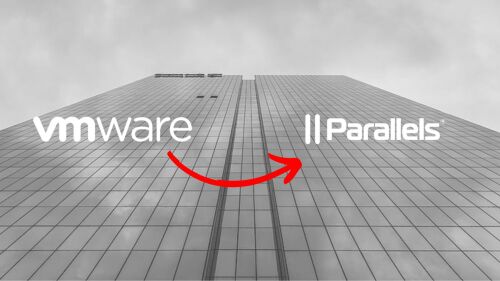Today, where digital transformation is more than just a buzzword, businesses around the world are looking for powerful, efficient and cost-effective solutions to streamline their operations. Recognizing this need, we are witnessing a major shift in the virtualization landscape as organizations consider moving from VMware Horizon to Parallels Remote Application Server (RAS) as a credible alternative.
The need for change
VMware Horizon has long been a key player in providing virtualization solutions, enabling enterprises to deliver desktops and applications to their workforce. However, with the evolving demands of modern businesses and the continued push towards more economically viable solutions without compromising performance, alternatives such as Parallels RAS have come to the forefront.
Why Parallels RAS?
Parallels RAS stands out as a high-performance alternative, offering a blend of simplicity, flexibility and cost-effectiveness. It makes it easy to securely deliver applications and desktops to any device, making it the right choice for enterprises looking to enhance their virtualization infrastructure.
The migration strategy
Migrating from VMware Horizon to Parallels RAS is a critical decision that requires meticulous planning, expertise and a focus on minimal disruption. This process begins with a comprehensive assessment of the existing VMware Horizon infrastructure, identifying critical components, user needs and potential application issues that may impact the migration path.
Step 1: Analysis
A thorough analysis of the existing VMware Horizon environment is critical. This includes mapping the structure of the existing VMware Horizon farm, including virtual machines, load balancing, and deployment of reverse proxy solutions such as Netscaler.
Step 2: Design
With a clear understanding of the current state, organizations can effectively plan their transition. This includes setting goals, assessing resources and identifying any potential risks. Critical to this phase is assessing the availability of resources, including CPU and RAM, to support the Parallels RAS environment and running trial licenses for testing and evaluation.
Step 3: Preparation
Before proceeding with the migration, it is necessary to prepare by organizing the transfer of existing resources, such as servers and applications. This step ensures a smooth transition with minimal impact on end users.
Step 4: Execute
The actual migration marks an important milestone, requiring constant monitoring to immediately address any issues that arise. Engaging key users and offering support throughout the process is vital to a seamless transition, highlighting the importance of thorough testing to ensure that all critical functionality is successfully migrated to Parallels RAS.
In a few words
The transition from VMware Horizon to Parallels RAS is a journey that encapsulates the essence of modernization in the virtualization space, promising increased efficiency, scalability and cost savings. As organizations look to the future, adopting this change is a step toward achieving operational excellence and competitive advantage in the digital age.
For those exploring the virtualization landscape and considering this strategic transition, the journey from VMware Horizon to Parallels RAS offers a path full of opportunity, innovation and growth.




